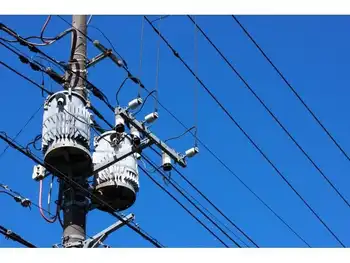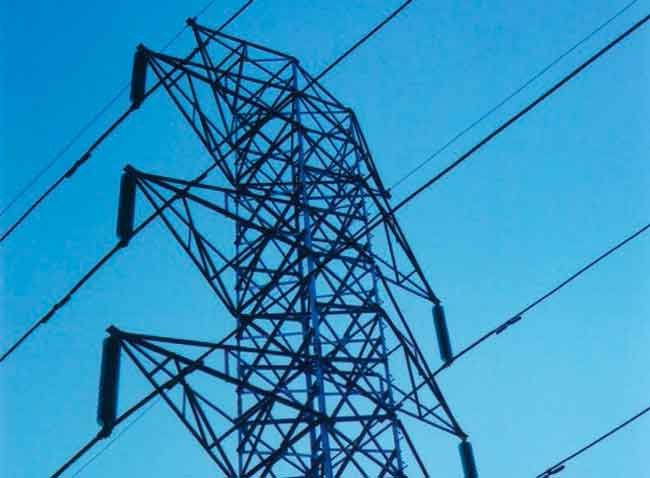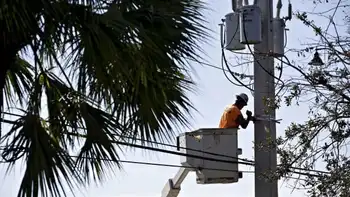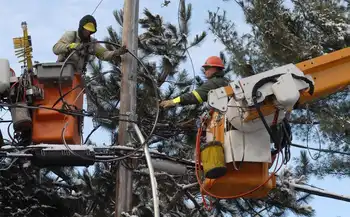Japan’s “myth of safety” with nuclear power
By National Post
Electrical Testing & Commissioning of Power Systems
Our customized live online or in‑person group training can be delivered to your staff at your location.

- Live Online
- 12 hours Instructor-led
- Group Training Available
At a nationally televised news conference, Masataka Shimizu bowed deeply in an exhibition of remorse and declared, “I am resigning for having shattered public trust about nuclear power and for having caused so many problems and fears for the people.
“I want to take managerial responsibility and bring a symbolic close.”
But Japan and his company, Tokyo Electric Power Co., may wait decades to witness the end to the worst crisis in the countryÂ’s post-war history.
TEPCO is already feeling the pain — in the past three months it lost US $15.3-billion as a result of the continuing nuclear meltdown at the Fukushima Daiichi power plant in the wake of a 9.0-magnitude earthquake and a tsunami with 15-metre high waves.
At least 15,000 people died after the twin disasters battered the northeastern Tohoku region on March 11. Another 9,506 are still missing and more than 80,000 are homeless, with no idea of when, if ever, they will be allowed to return to their old neighbourhoods.
The worldÂ’s third-largest economy has suffered nearly US $400-billion in damage and been thrust into recession. Japanese manufacturers have been staggered by power shortages and breaks in their supply chains, and are not expected to return to business as usual before the fall.
According to the World Bank, it will take at least five more years just to clean up the mess left by the natural disasters.
But it is the continuing nuclear catastrophe at Fukushima, just 200 kilometres north of Tokyo, that really threatens JapanÂ’s future.
As emergency workers still struggle to control four of the plantÂ’s six nuclear reactors, the Japanese are only now learning just how serious the crisis has been.
Radioactive isotopes have spewed into the air, contaminated the soil and been flushed into the sea, but the threat of even more dangerous exposures remains as nuclear experts try to determine the full extent of the damage.
Radiation levels in the three damaged reactors are so high emergency crews can only spend a few minutes at a time near the buildings. They have been able to enter only two of the damaged structures to restart monitoring equipment.
TEPCO has announced a two-phase plan to resolve the crisis: it hopes to spend three months cooling the damaged reactors and plugging radiation leaks and another six months putting the reactors into a stable state known as a “cold shutdown”.
If everything goes smoothly, the reactors could reach “cold shutdown” by early next year.
But that timetable depends on how badly damaged the reactors are and how well the company manages to contain thousands of tonnes of contaminated water.
The reactors are being cooled by circulating water that had leaked into the reactor containment vessels or basement areas after it has been cooled with heat exchangers.
The aim is to extract hot water and inject chilled decontaminated water into the chamber containing the reactor fuel rods.
To do this, TEPCO is building tanks to store up to 16,000 tonnes of contaminated water a month.
It has already released 11,500 tonnes of the water into the ocean. Just recently, it discovered a further 3,000 tonnes that had apparently leaked from the damaged containment vessel of the No. 1 reactor into underground areas of the reactor building.
Working with and storing so much radioactive water may slow repair work considerably.
Even after TEPCO achieves a cold shutdown, it may take decades to decontaminate the plant.
After the partial meltdown at the Three Mile Island, Pennsylvania, nuclear plant in 1979, work to remove the melted fuel from the undamaged pressure vessel did not start until 1985 and took five years to complete. A further three years were needed to remove radioactive contamination from the reactor.
The uncertainty and anxiety surrounding the Fukushima disaster have caused an unprecedented public backlash in Japan, generating protests, tirades on Twitter and YouTube, death threats and displays of defiance.
There is a widespread feeling the government and TEPCO officials did not disclose all they knew during the early days of the crisis and have been less than forthcoming since.
In the first weeks after the earthquake, TEPCO officials received 40,000 complaints a day about the lack of information. Police had to be assigned to guard the companyÂ’s offices from anti-nuclear protesters.
Now, TEPCO released documents showing it was dealing with three simultaneous nuclear meltdowns, while reassuring people the fuel rods were safely intact in all the reactors.
“Why did it take two months to get to this point?” demanded an editorial in the Nikkei business newspaper.
“Even a rough calculation of conditions inside the reactors would have helped in choosing the best response.”
Public confidence was shaken further when it emerged engineers at Fukushima were so unprepared for the disaster, they had to scavenge flashlights from nearby homes and used car batteries to try to reactivate damaged reactor gauges.
Even now, two months later, only 10 of the plantÂ’s workers have been tested for internal radiation exposure caused by inhaling or ingesting radioactive materials. ThatÂ’s because most of the testing equipment is inside the contaminated buildings.
One month into the disaster, government officials ordered the evacuation of five villages outside an exclusion zone, but it wasnÂ’t until well into April it released data on radioactivity for those areas.
At the end of April, Naoto Kan, the Japanese Prime Minister, lost one of his chief scientific advisors, when Toshiso Kosako, a Tokyo University professor, quit in protest at what he called politically expedient decisions to ignore international nuclear safety standards.
For example, when officials in Fukushima prefecture discovered 75 of the regionÂ’s school sites had radiation levels above the existing safety standard of one millisievert a year, they upped the standard to 20 millisieverts a year, the maximum annual exposure allowed German nuclear workers.
“The nuclear crisis has certainly undermined already shaky tolerance in Japan of the close ties among business, bureaucrats and political leaders,” said Peter Ennis of the Brookings Institution.
A poll by the Yomiuri Shimbun newspaper showed 73 of respondents “have a low opinion” of the government’s response to the crisis.
Mr. Kan, who is fighting for his political life, has scrapped plans to build 14 new nuclear plants and abandoned an energy policy that sought to have nuclear energy provide 50 of the countryÂ’s power by 2050.
Instead, Japan will shift its attention to renewable energy solar, wind, and biomass and energy conservation. But the combination of the Fukushima disaster and emergency inspections of existing nuclear plants has created a new energy crisis — only about a third of the 54 nuclear reactors are operating.
To avoid crippling power shortages, Japan must cut energy consumption by almost 20.
That could make it difficult for some of its major exporting industries to restart production, Banri Kaieda, the Economy, Trade & Industry Minister warns.
“If the situation continues, there is a danger of Japanese manufacturers taking their facilities overseas,” he said.
Like most Japanese, he blames the utility companies.
“There was a myth of safety, a belief that Japanese nuclear plants are the safest in the world,” he said.











